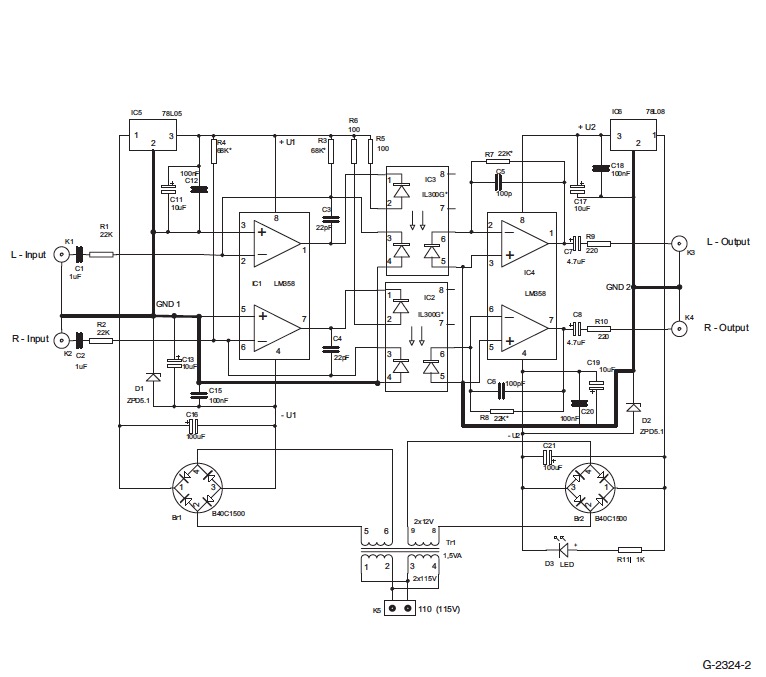

- #AUDIO GROUND LOOP ISOLATOR SCHEMATIC PC#
- #AUDIO GROUND LOOP ISOLATOR SCHEMATIC SERIES#
- #AUDIO GROUND LOOP ISOLATOR SCHEMATIC TV#
Wrap aluminium foil round the outside and connect it to one of the plugs, so that the internal parts are properly shielded from external interference. The mechanical construction has to be sturdy enough such that the connections to the capacitors won’t break whenever the inline adapter is removed forcibly.Ī good way to do this is to make a cover from a piece of PVC piping for the central part.

To make the isolator you should connect one capacitor between the two earth connections of the coax plugs and the other between the two signal connections. Values of 1 nF or 2.2 nF are therefore sufficient. These capacitors don’t need to be high value ones, since they only have to pass through frequencies above about 50 MHz.
#AUDIO GROUND LOOP ISOLATOR SCHEMATIC PC#
It is furthermore advisable to choose types rated for high voltages (400 V), since the voltages across these capacitors can be higher than you might expect (A PC that isn’t connected to the mains Earth can have a voltage as high as 115 V (but at a very low, safe current), caused by the filter capacitors in its power supply. The latter have to be suitable for high-frequency applications, such as ceramic or MKT types. The only requirements are a male and female coax plug and two capacitors.
#AUDIO GROUND LOOP ISOLATOR SCHEMATIC TV#
The simplest way to produce such a ‘filter’ is as an in-line adapter, so you can just plug it onto either end of a TV aerial cable. The latter method is easily the simplest to implement and generally works well enough in practice.

#AUDIO GROUND LOOP ISOLATOR SCHEMATIC SERIES#
The other is to use two coupling capacitors in series with the cable.

The first is to use an isolating transformer with two separate windings. There are two ways in which you can create galvanic isolation in a TV cable. Good news: such a filter can also be easily made at home by yourself. Special adaptors or filters are sold for this purpose, known as video ground loop isolators. The ground loop problem can be overcome by galvanically isolating the video connections, for example at the aerial inputs of the surround-sound receiver and the TV. The usual result of this is that there will be a hum in the audio installation, but in some cases you may also see interference on the TV screen. On top of this, there are many analogue connections between these devices, such as audio cables. The TV is also connected to this and it’s highly likely that the PC has a TV-card, which again is connected to the same system. The surround-sound receiver contains a tuner that takes its signal from a central aerial distribution system. This often creates a problem when earth loops are created in the shielding of the video cables, which may cause hum and other interference. This is especially the case with the TV, which may be connected to a DVD player, a hard disk recorder, a surround-sound receiver and often a PC as well. These days many more audio-visual devices in the home are connected together.


 0 kommentar(er)
0 kommentar(er)
